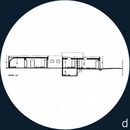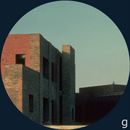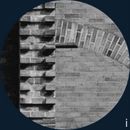








One of the first commissions that Jean Nouvel received can be traced to 1977, when a gynaecologist who was enthusiastic about architecture asked him to design his house. The client’s enthusiasm ensured that from the very beginning this would be an intriguing collaboration throughout the design process. The young architect responded positively to this request, intense conversations were had with the family about how the house might be.
Through dialogue a project emerged that everyone was happy with, yet unfortunately it did not obtain a building permission. The project was described by the local building authorities as a pastiche which did not integrate with the existing environment. Although the architect had to accept the imposed changes, he took advantage of the existing situation, creating the final image of the dwelling.
Towards a “critical architecture”
From his student’s years, Jean Nouvel was convinced that one could only practice architecture by following a personal commitment. He had taken an active part in the students’ revolts of May ’68. He was also instrumental in the outburst at École des Beaux-Arts, where young architects demanded a redefinition of the profession, celebrating a dialogue with the user and encouraging a democratic process when developing a project. In that way, the students questioned the type of architecture that was being made and what it could turn into. In this context Nouvel’s position was clear: to look for freedom away from the architectural discipline and to adopt an attitude of being sceptical and questioning; to listen and to make use of contradictions and characters of every situation and place.
To obtain this freedom, Nouvel’s critical dimension of architecture could not limit itself to theoretical texts or paper architecture. It was necessary to support his polemic position concerning themes related to architecture and the city by going as far as to wish for a change within the majority of the laws that regulated the building construction. Nouvel was one of the founding members of Mars 76 and the Architecture Union in 1976. Furthermore, he organised an unofficial architecture competition for the redevelopment of the Le Halles neighbourhood.
Nouvel with his partners, published manifestos, turned to the street on various occasions, fought against the narrow corporate nature of the profession, challenged zoning and the regulations concerning the occupation of the terrain which expressed technocratic vision which was short of humanism in terms of urban planning. Nouvel’s militant activity has always involved fighting against any obsolete norms.
The construction of the house
This was the historical context in which Mr Dick commissioned Nouvel to design his house.
The site was in the medieval city, Troyes, located in the Champagne region of France, South East of Paris. The city is now a famous tourist attraction where its narrow pedestrian streets are lined with half-timber framed houses. Troyes is also known as the holy town of stained glass, which adorn the 10 churches in the city centre, as well as containing the most ancient civil building in France that still remains devoted to wine.
The collaboration between Dr. Dick, his family and Jean Nouvel was intense. They spent long evenings defining the most suitable living spaces for the different members of the family. They decided to give the main living spaces one volume, which, according to a logical programme, included a number of vaults. In this way, the ample living room was located under a white painted barrel vault but also, the architect created a spacious play area for the children where each one had a small apse that was intended as a warm and secure bedroom.
Submitting the result of their conversations to the department of administration, the office denied the project a building licence on the grounds that the design was a pastiche of Byzantine architecture, thought to be out of context with the medieval city of Troyes. The report was demoralising and accused the house of not integrating with the environment, an environment which according to Nouvel “consisted of a disorderly mixture of neo-regional copies and apple green supermarkets.”
The architect complained to the town hall, he wrote to the president of the regional committee, and even to the minister of housing, but to no avail. Worn-out of fighting, Nouvel had no choice but to introduce the changes and additions requested for the facade, although he made no modifications in the interior.
Throughout this endless process, Nouvel took every available opportunity to make his cultural position explicit. He applied again for the building licence presenting plans that were so brief that they managed to confuse the administration. The project was accepted and the building work started. He took advantage of their confusion, creating a final external image for the house which incorporated the footprints of censorship within the building facade. Nouvel marked this episode of the censorship and deadly norms with a line of red bricks that traced the changes he was forced to make on the facades. As well as being a new home for the Dick family, it proved to be a statement of a personal definition for the architect and of the client, in refuting any questions of style or norms, pleading for an architecture that was rooted in cultural values and a dialogue.
Photographs: Nouvel Atelier
a. “The task of architects is precisely to create a cultural definition of the built environment.” Jean Nouvel Jean Nouvel (b. 1945). (Photograph: Gaston).
b. Dick’s house (Troyes, 1978) was the first project realised by Nouvel that could be called “critical architecture.”
c+d. The intense conversations between the architect and the doctor brought about the project that the client wished for but did not obtain a necessary building permission.
e. With the client’s help, the dwelling spaces were defined and adjusted to meet the different requirements of all members of the family.
f+g+h. Although the architect had to accede to the imposed changes, he took advantage of the situation in order to create the final image of the house and to leave footprints of the censorship on its facades.
i. A line of red visible bricks traces all the footprints of the censorship and the obsolete regulation which it stands for.


